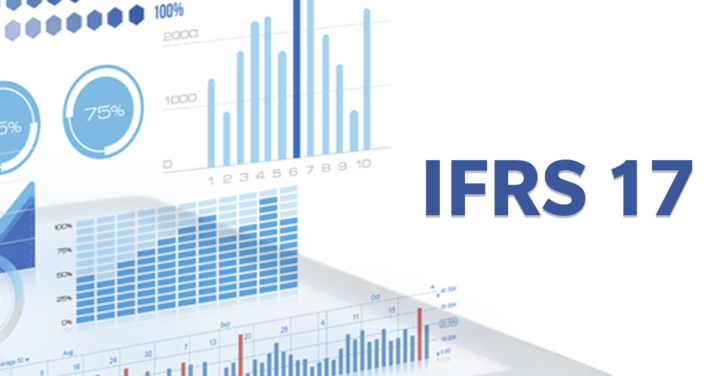
The end is in sight for the implementation of IFRS 17, scheduled to take place on January 1, 2023. To get a view of the state of affairs on this project, we sat down with the Co-Chairs of the IFRS 17 Steering Committee, Les Rehbeli, FCIA, and Sati MacLean, FCIA.
We are now less than a year from the IFRS 17 implementation date. What’s your view of how the profession and industry are faring at this point?
Les: The process is far along. We expect company policies and systems to be finalized over the next few months, with most of the big decisions having already been made. Valuation systems have likely converted over, and the accounting engines to determine the contractual service margin (CSM) have been built or mostly built.
Sati: I agree with Les, but there are still areas that will continue to evolve. For example, interpretation of IFRS 17 financial statements and how results compare to IFRS 4. Some significant presentational changes under IFRS 17 will alter the interpretation of financial statements, and there is uncertainty as to what key performance indicators will look like. To date, the focus has been on producing the numbers, but now we need to address what they really mean.
Les: An additional issue is that, even though accounting rules are settled, the capital rules are not. The Office of the Superintendent of Financial Institutions (OSFI) is still considering changes, so this is a challenge. We need to understand what sort of volatility in capital ratios we can expect. We have a reasonable handle on the emergence of profits at this point, but less so on the capital implications.
Even though the implementation is in 2023, parallel runs on the old and new bases need to start in 2022.
Les: Yes, companies will start comparing results on both bases as early as Q1 2022. We expect issues to emerge during these parallel runs, which hopefully can be resolved beforehand.
Sati: It will be interesting to see how companies deal with the learnings from these parallel runs. If we overlay parallel quarterly runs on top of creating the transitional balance sheet as of year-end 2021, there is little time to identify and address all the issues before January 1, 2023.
The focus of these comparative runs will not only be on producing IFRS 17 balances but also on getting the numbers through the accounting systems. Some companies will not have the luxury of rerunning their transitional balance sheets and quarterly comparatives multiple times as they uncover any issues. 2022 will be a year of heavy lifting and collaboration between the actuaries and the accountants.
IFRS 17 also required insurers to do some significant work with enforcing blocks of business. Where does that stand?
Les: The transitional CSM has been a key discussion point for the last couple of years. By now, companies have narrowed down the ways to calculate that quantity, and the methodology should be close to finalized. Insurers will not have much time to redo these calculations in 2022, especially considering that IFRS 4 results must be completed throughout the year as well.
Sati: Again, the transitional balance sheet is important here. Even though some issues may persist into the new year, it is a line in the sand that needs to be as robust as possible.
We tend to talk a lot about the impact on the life insurance business, but are there any issues on the P&C side that have emerged?
Sati: The ones that come to mind are profit emergence, KPIs, treatment of reinsurance held, and the role of the Appointed Actuary, although some of these are not specific to P&C. Many P&C companies are using the premium allocation approach (PAA). The main differences in the IFRS 17 valuation compared with IFRS 4 will be the level of discounting, the risk adjustment, and the assessment of loss components. While in principle, the PAA approach should result in a similar level of profitability as we currently see, the emergence of those profits will be different.
Determining KPIs in an IFRS 17 world will be challenging given that the P&C’s beloved combined operating ratio, which is a simplistic measure indicating profitability, will be different under IFRS 17.
Treatment of reinsurance held also presents issues, as there is still a range of interpretations on how to apply the new accounting standard. Lastly, there is still some discomfort among actuaries that they will continue to be responsible for opining on the valuation liabilities and the financial position of the insurer despite not having control over some of the key assumptions.
The CIA has produced a lot of guidance related to the implementation of IFRS 17. Are there still some major pieces outstanding?
Les: We are in good shape now that IAN 100 has been released and adopted by the CIA as an educational note. This forms the cornerstone of our guidance, and any additional CIA documents will serve to supplement it.
Most of the CIA planned papers have been released in draft form and are under edit for minor changes to wording. In several cases, more substantive changes are required. We are well-positioned but not yet done.
What are some of the contentious issues you are working to resolve?
Les: The discount rate is a significant one and has been for a while. There is ongoing concern about the range of practice for both life and P&C. Currently, the Actuarial Standards Board promulgates some assumptions (such as discount rates) under IFRS 4. However, we do not expect such promulgation in IFRS 17. This continues to be a subject of ongoing consideration.
Sati: We should note that IFRS 17 is a principle-based standard and that Canada would be one of the few jurisdictions that would promulgate it if we choose to go down this path.
Will IFRS 17 have any impact on insurance product design?
Les: I think so. We can expect to see negative pressure on products that offer rich and/or long-term guarantees. These types of coverages generally look bad under IFRS 17 and the Life Insurance Capital Adequacy Test (LICAT). In my view, I would expect companies to make a shift back to more traditional products.
Sati: I believe that IFRS 17 is less of an issue on P&C products, which are generally one-year term coverages. However, insurers may need to take a closer look at their contract terms and include wording that allows for contract boundaries that support PAA.
Looking at reinsurance, IFRS may restrict when you can recognize a loss recovery component on onerous business that has been ceded, leading to changes in reinsurance terms. Treatment of retroactive covers is quite different under IFRS 17 too. So, perhaps we will see new reinsurance products emerging that are easier to account for under IFRS 17 but perform a similar type of risk transfer.
Has COVID-19 affected how companies are managing the move to IFRS 17?
Sati: Originally, IFRS 17 was scheduled to be effective on January 1, 2022. Dealing with a pandemic simultaneously as a productive transition to IFRS 17 would have been a nightmare. If the delay to the implementation date to 2023 was partly due to the pandemic, it was a welcome change. But I would not say that the move to IFRS 17 has suffered because of COVID.
One thing we’ve seen is a shortage of actuarial resources to help us deliver a more robust transition, which is consistent with what other industries are experiencing as we all come through the pandemic.
Les: We did see a scarcity of resources at the junior level. However, companies seem to have adapted quite well, and the IFRS 17 implementation process has proceeded quite efficiently. I don’t think this could have been done so efficiently if the pandemic had happened 10 years ago, though, based on technology that was available at the time.
As implementation of the new reporting standard draws near, we encourage you to stay up to date by visiting our members-only IFRS 17 blog for relevant links, news, and resources.





